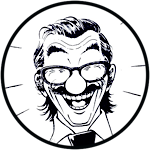A few days ago we offered you an insight into Bob De Moor’s trip to Mülheim in 1986 to represent the Studios Hergé and to explain how he worked. This was possible thanks to the archives of Johannes Stawowy. Today these archives take us to Brussels in 1986, more precisely to the Studios Hergé based at the Avenue Louise 162 (side-note, that same year they would be renamed Fondation Hergé). And surprise, for once Bob De Moor is the man behind the camera.
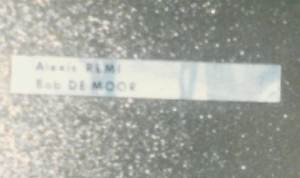
Johannes stayed 6 weeks at the Studios Hergé in July/August 1986 mainly to bring some order into the archives. In one photo we received you can see Johannes standing in front of the door of Bob De Moor‘s office. We enlarged a detail and the name plate on the door still said Alexis Remi and Bob de Moor although Hergé‘s father had died in 1970, 88 years old.
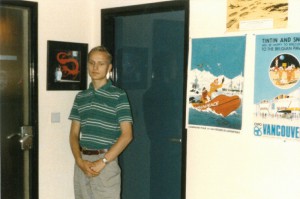
In another photograph we see Johannes standing a bit shy next to said door: “I was pretty shy if you look back at these pictures, just being ironic. You can also see the original 1935 painting from the “The Blue Lotus” album on the left of me, I should have taken it with me, hehe!” In the same picture you can see the poster which Bob De Moor made for the Belgian pavilion at the Vancouver’s Expo of 1986. We’ll be talking about this poster in tomorrow’s news. The sticker which was also produced by the Studios Hergé for the Vancouver’s Expo of 1986 can be seen in the 3rd picture where Johannes sits at Bob De Moor‘s desk.
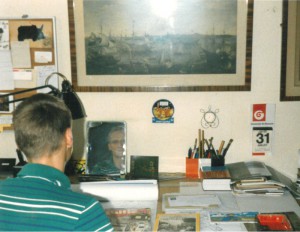
It was Bob De Moor directing the photos, that’s why he asked Johannes to sit down at his own desk. In the picture on the left you can see the mirror which was often used in gags by Bob De Moor when he drew a cartoon of himself. You can also see a National Geographic issue and some Kuifje magazines. You can also notice the BP sticker Bob De Moor created featuring Thomson and Thompson. The big drawing on the wall will surely remind some of our readers of a drawing Bob De Moor made. Was it used as a reference?
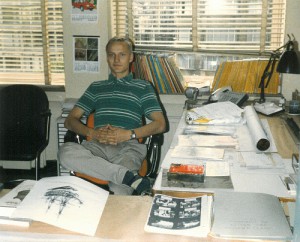
The next pictures gives another view on Bob De Moor‘s desk. It is filled with material including a picture/photocopy of a boat, which he was probably using to work on Cori’s “L’Expédition Maudite” which would be published in 1987. You also see a storyboard of one of the Fruit D’Or adverts produced in the 1970s and 1980s (on the right of the boat picture – and yes you will need to turn the picture 180 degrees and watch closely). It’s not clear which storyboard it is. Note the Citroën calendar on the wall behind Johannes as created by Bob De Moor for the Studios Hergé.
The Johannes Stawowy archives provide us with a very rare insight as they show images and material which never reached the big public. As a result we’ll be publishing several more articles based on the material that Johannes kept in his vaults for all these years.
